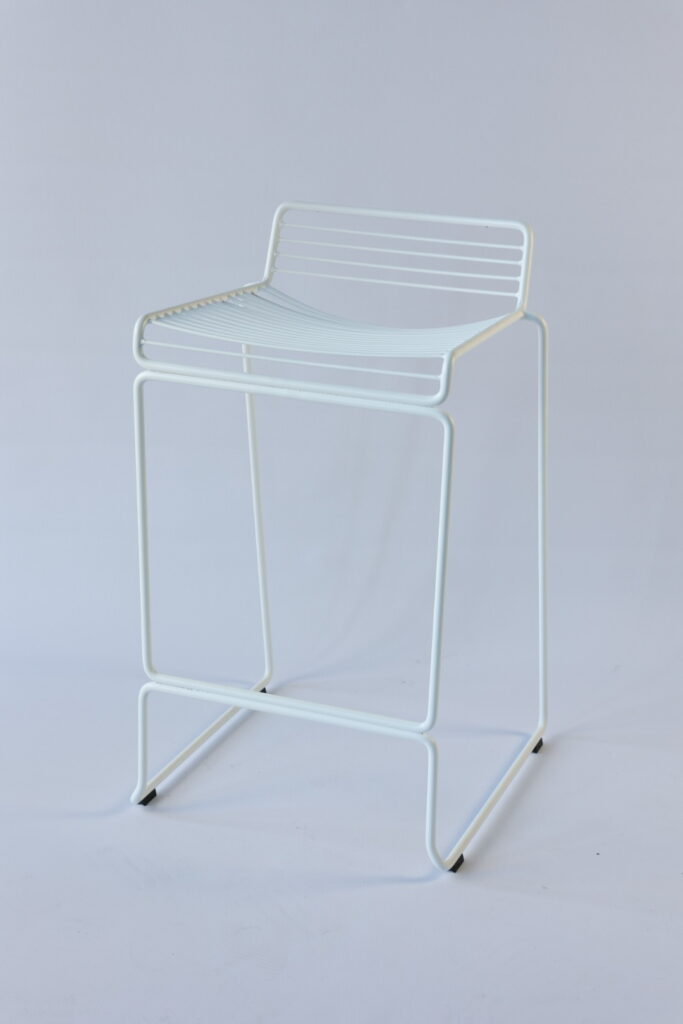
The Paulo Rod Kitchen Stool, by LA Furniture. Directly inspired by the original Bertoia Wire Bar Stool design by Harry Bertoia.
The Bertoia Wire Bar Stool, designed in 1952, stands as one of the most iconic pieces of mid-century modern furniture. Created by Harry Bertoia for Knoll, the stool combines functionality with sculptural artistry. This helps it embody the philosophy that everyday objects can also be works of art.
Origins of the Design
The stool is part of the celebrated Bertoia Wire Collection, a series of chairs and stools crafted from welded steel rods. Bertoia, fascinated by geometry and transparency, sought to create seating that was “mostly made of air.” By bending and welding slender steel rods, he created a seat that feels both lightweight and strong. The ergonomic curve of the seat and backrest ensures comfort despite its airy structure. This helps make it as practical as it is visually striking.
Harry Bertoia’s Story
Born in 1915 in San Lorenzo, Italy, Harry Bertoia emigrated to the United States as a teenager. He studied at the prestigious Cranbrook Academy of Art in Michigan. That is where he crossed paths with modern design pioneers like Charles and Ray Eames, Eero Saarinen, and Florence Knoll.
In 1950, Bertoia began his collaboration with Knoll, leading to the creation of the Wire Collection two years later. His work blurred the line between sculpture and furniture, a theme that would continue throughout his career. Beyond furniture, Bertoia became widely celebrated for his sound sculptures – large-scale metal forms that produced resonant tones when struck or moved by the wind.
Legacy of the Bertoia Wire Stool
The Wire Stool is more than just a piece of seating — it is a testament to modernist innovation. Its minimal use of materials, structural clarity, and airy elegance have made it a timeless classic, still produced by Knoll today. Found in kitchens, cafés, and design-forward spaces worldwide, the stool continues to reflect Bertoia’s belief that “the essence of sculpture can live in the everyday.”
